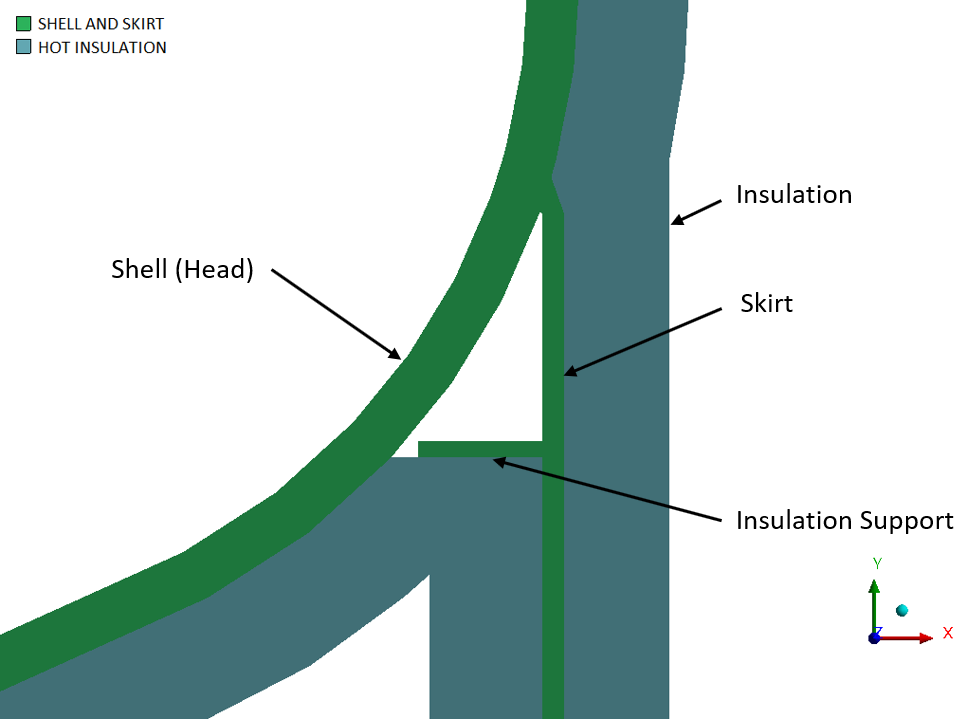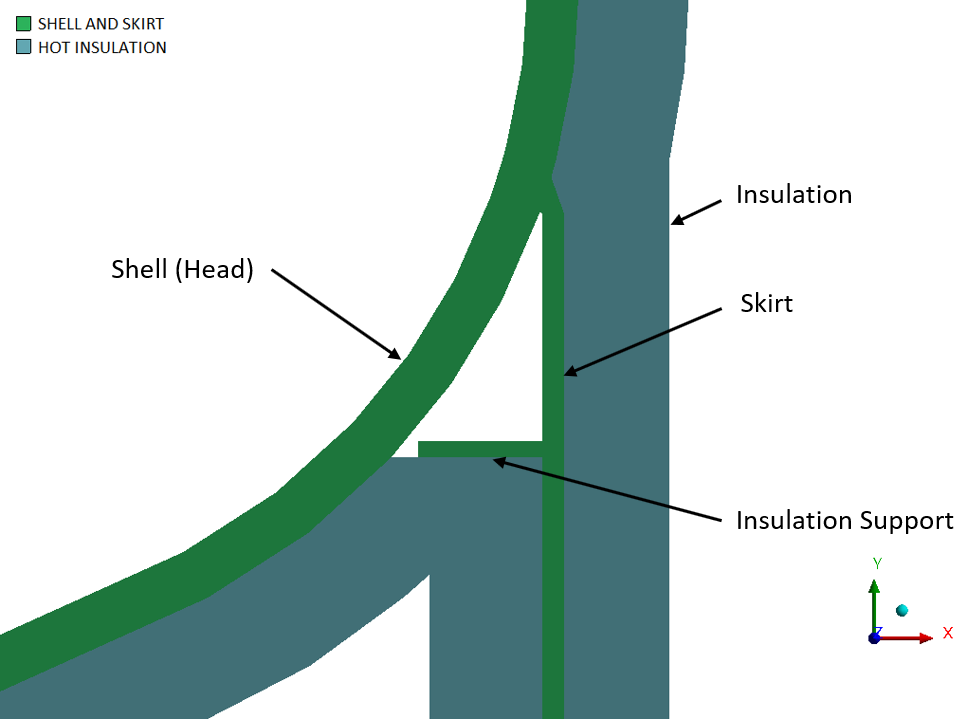In the first part of the article, the focus is on understanding what a hotbox is and defining the problem for hot box simulation.
How hot is a Hot Box in Pressure Vessels?
Vertical pressure vessels or columns are widely used in the power and energy sector like refineries, petrochemical and gas plants. The applications include distillation columns, fractionators, absorbers, coke drums, gasification equipment, etc. A vertical pressure vessel supported on a skirt forms a junction near the dished end, resembling an inverted ‘Y’. Owing to the varying processes in the vessel, the vessel walls may reach high temperatures ranging from 400 – 500°C. However, the skirt, which is only a support component, is not in direct contact with any high-temperature fluids and usually would be exposed to atmospheric temperature conditions if no insulation is provided. This leads to a steep temperature gradient near the junction. This article focuses on this Y-junction, the problem it poses due to the temperature conditions, and its solution – the “hot box”.
The Problem – What happens when different temperature plates meet at the junction?
In a typical high-temperature shift reactor, for example, a component in a gasification plant, the temperatures in the vessels are in the range of 350 – 420 °C. The high temperatures in the vessel and low temperatures in the skirt give rise to a temperature gradient. The lower the ambient temperature, the higher the gradient observed. However, as will be seen later, the gradient is not uniform throughout the length of the skirt. Still, the temperature drop near the junction is sudden, followed by a gradual temperature gradient. Considering the nature of thermal stresses, high temperatures are not as big a problem as steep temperature gradients. Temperature gradient and not high temperature is the cause of thermal stress in the majority of the cases. The stresses due to the thermal gradient and pressure and temperature fluctuations during operating conditions form a probable case for failure at the junction. Therefore, it becomes necessary to reduce the temperature gradient.
The Solution – How to deal with high-temperature gradients?
Identifying the problem is the first step toward the solution. Once the problem is identified, an attempt can be made to reduce, if not eliminate, the root cause. In this case, the root cause is a temperature gradient. The higher end of the gradient, i.e. the vessel wall temperature, is process-driven, and temperature conditions cannot be altered. The lower end of the gradient is due to the ambient temperature, which again cannot be altered, but its effect can be reduced by providing insulation. The skirt is applied with insulation both on the inner and outer sides. The shell is insulated from the outside to minimise the heat loss to the surroundings to maintain the process temperature in the vessel and avoid high-temperature metal exposure to humans. The application of insulation aids in reducing the temperature gradient in the skirt near the junction, as shown in Figure 2 (Case 2).
To further reduce the gradient in the skirt near the junction, the concept of a hot box is applied. Hotbox is a simplistic but effective solution to reduce the sudden thermal gradient and convert it to a more gradual gradient over space. The shell and skirt are insulated in a configuration so that an air pocket is formed between the head, the skirt and the insulation. This configuration enables convection and radiation to assist the heat transfer from the head to the skirt apart from the conduction. Due to the enhancement in convective and radiative heat transfer, it is essential to consider the effect of these modes while predicting the stresses in the metal, which would be otherwise ignored due to a very small proportion of heat transfer compared to conduction. This study focuses on the FEA performed to study the effect of radiation and convection on the stresses at the dished end to skirt junction. The typical hot box looks something like the given in the figure below:



0 Comments